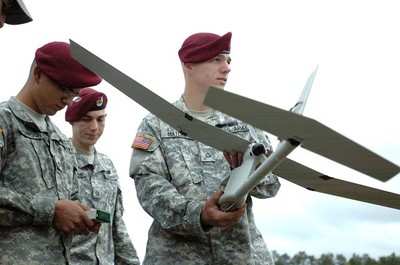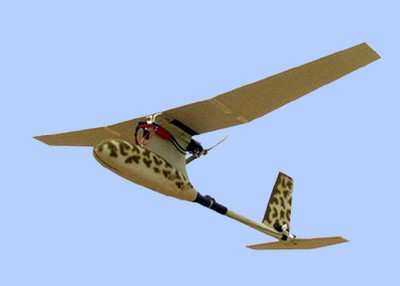About 90 Percent Of The Army's Unmanned Flying Hours Are In
Support Of Combat
The Army is fast approaching one million hours of unmanned
flight with its unmanned aerial systems. "Right now it looks like
we'll hit probably 1 million total hours sometime next month," said
Col. Christopher Carlile, director, U.S. Army Unmanned Aircraft
Systems Center of Excellence. "But it'll take us to around
September or October before we'll hit one million hours in support
of combat operations."

The colonel said about 90 percent of the Army's unmanned flying
hours are in support of combat. The Army aviation community will
recognize the milestone in late May with displays at the Pentagon
and the Smithsonian Museum in Washington.
Speaking to an audience of Soldiers and defense-industry
professionals last week during the 2010 Association of the United
States Army's Institute of Land Warfare Winter Symposium and
Exposition in Fort Lauderdale, FL, Carlile said the Army is
prepared for growth in use of unmanned aerial systems and for
broadening their mission sets. "Today we are probably 99
percent-plus for intelligence, surveillance and reconnaissance
roles for UAS," he said. "Though in the future, there will be new
roles." The colonel said those new roles could include
communications relays, sustainment and cargo, for instance.
 Training is ramping up for more UAS support as well. Out at
Fort Huachuca, AZ, the Army runs a joint training installation for
UAS operators and maintainers. There, they train Soldiers, Sailors
and Marines. Carlile said the Army is expected to see an increase
in Soldiers that need to be trained at the facility. "Today we will
train, in Fiscal Year 2010, about 800," he said. "By 2018, our
requirement is over 3,000 operators."
Training is ramping up for more UAS support as well. Out at
Fort Huachuca, AZ, the Army runs a joint training installation for
UAS operators and maintainers. There, they train Soldiers, Sailors
and Marines. Carlile said the Army is expected to see an increase
in Soldiers that need to be trained at the facility. "Today we will
train, in Fiscal Year 2010, about 800," he said. "By 2018, our
requirement is over 3,000 operators."
Unlike other services, the Army finds placing enlisted
servicemembers at the controls of a UAS to be most effective, and
Carlile said that is not likely to change. "Army enlisted UAS
operators are fully capable and well trained to do anything you
give them to do, and it'll shock you when you hear how many hours
of operation they have," he said.
Carlile said the Army puts aircraft like the RQ-7 Shadow and the
Raven in the lowest units, keeping their ISR capability close to
the commanders who will need it. "One of the greatest things we did
was place the Shadow platoon in the brigade combat team in the
early days," he said. "It allowed our infantry and our armor
officers to realize the potential and know they owned it and know
they were going to get it when they asked for it."
Aviation is a complex business, prone to mishap, Carlile said,
and the Army has found ways to minimize that by allowing technology
in the UAS to do "what it does best. What we found is that when the
Army adapted that methodology to go toward an automated method to
let the equipment do what it does best -- let it come up with
automated take off and landing strategy -- what we have seen, it
would shock you." The colonel said that human error accidents and
incidents are now nearing the single- digit mark now.

Raven UAV File Photo
Despite successes of UAS in Iraq and Afghanistan, late in 2009
it was reported in the press that the Defense Department had
confirmed that insurgents could intercept unencrypted video feeds
from UAS.
On Capitol Hill, Secretary of the Army John McHugh was queried
about UAS security by Senator Richard Shelby of Alabama. McHugh
said he felt confident about the current status of Army systems.
"The Army greatly values, and commanders feel very strongly, about
the Army's need to have these capabilities particularly at a
strategic level," the secretary said. "All the services recognized
that potential vulnerability early on and have reacted aggressively
to it, and we feel comfortable with the systems in place."
 Airbus Racer Helicopter Demonstrator First Flight Part of Clean Sky 2 Initiative
Airbus Racer Helicopter Demonstrator First Flight Part of Clean Sky 2 Initiative Diamond's Electric DA40 Finds Fans at Dübendorf
Diamond's Electric DA40 Finds Fans at Dübendorf ANN's Daily Aero-Term (04.23.24): Line Up And Wait (LUAW)
ANN's Daily Aero-Term (04.23.24): Line Up And Wait (LUAW) NTSB Final Report: Extra Flugzeugbau GMBH EA300/L
NTSB Final Report: Extra Flugzeugbau GMBH EA300/L Classic Aero-TV: 'Never Give Up' - Advice From Two of FedEx's Female Captains
Classic Aero-TV: 'Never Give Up' - Advice From Two of FedEx's Female Captains





